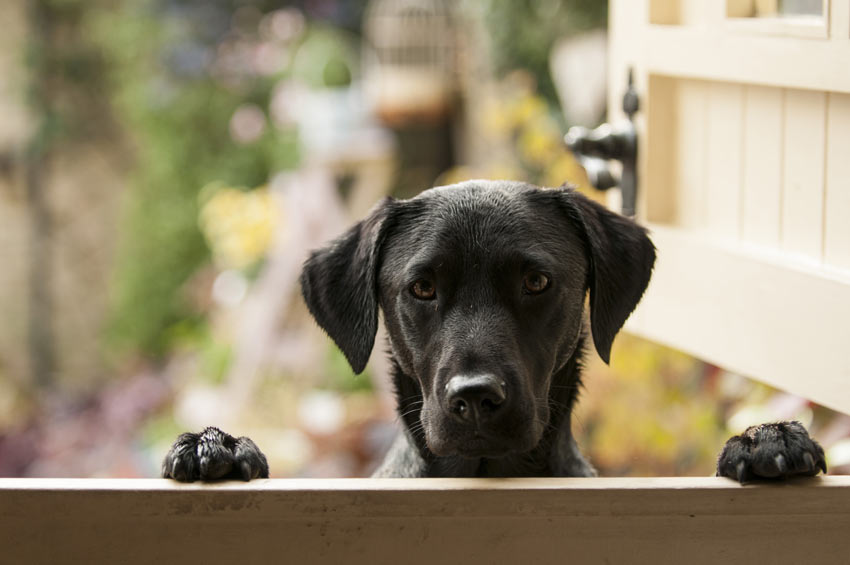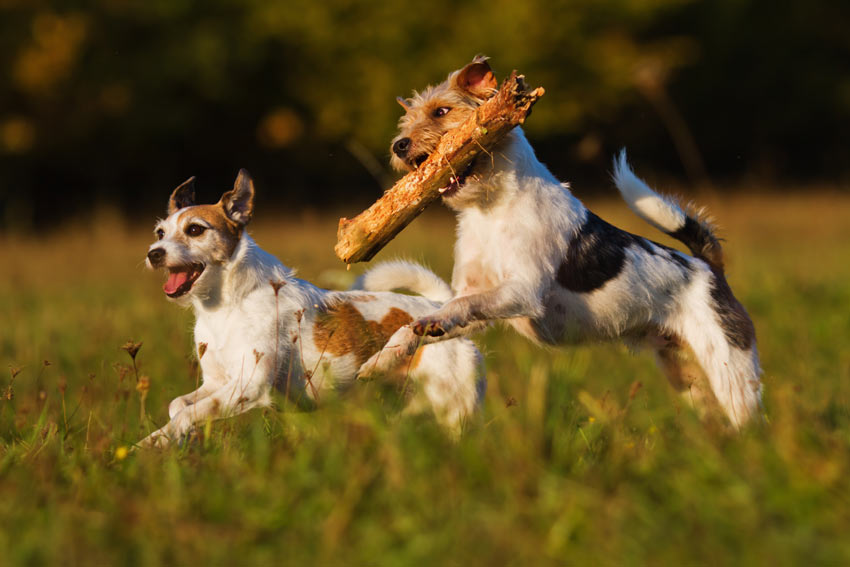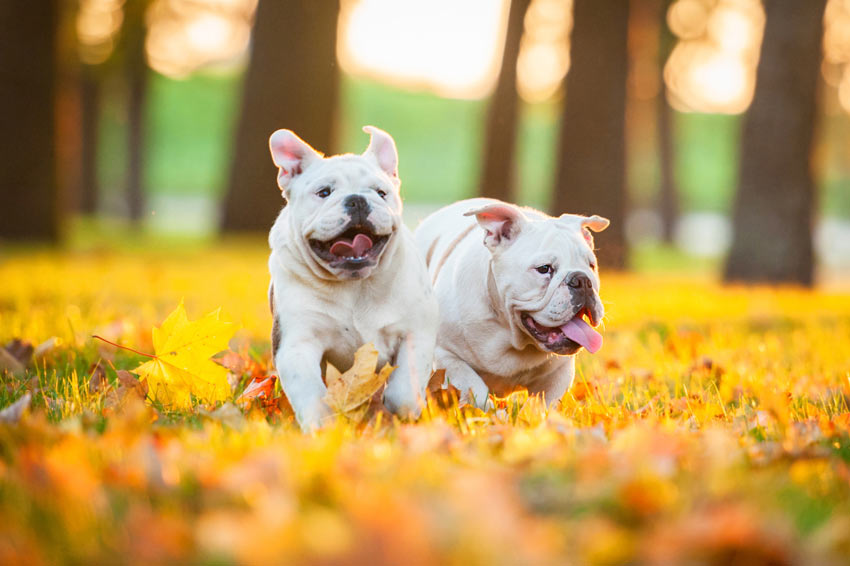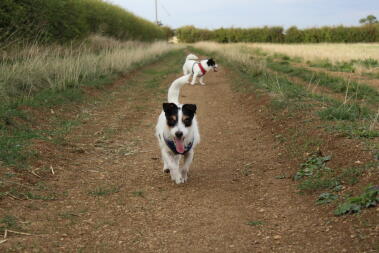It's easy to get frustrated with the so called "chore" of walking your dog (especially in England when the sun only comes out for three months a year), but striving to make the exercise enjoyable for both you and your dog can improve both of your lifestyles dramatically. You can even exercise your dog inside by making him work for his treats and using pathways through your house as makeshift obstacle courses. Read on to find out exactly how much exercise your dog needs, and how to get the most out of walking him.
How Much Exercise Does A Dog Need?
Its easy to see that the athletic and muscular Rhodesian Ridgeback will need more exercise than the stocky English Bulldog but for other breeds it can be less straightforward. How much exercise or how far your dog should be walked depends on its size, age and breed.

A Labrador excited about going on a walk
Giving your dog regular exercise everyday is the perfect way to keep them in shape. To understand how much exercise your dog needs, take him on a walk and see if he is worn out by the end of it. If he has had enough exercise he is likely to rest or sleep. If he is still full of beans or seems to be putting on excessive weight, you will need to lengthen your walk, or provide him with more strenuous activities along the way. Some great ways to give your dog more exercise on a walk include swimming (if the breed is able to do so) and a game of fetch.

Two Terriers getting a lot of exercise retrieving sticks
It is important to understand that taking your dog on a big, long walk at the weekend will not make up for any exercise that he isn’t getting during the week. Make it interesting by bringing a ball to play with and get the whole family involved. This will provide your dog with a great deal more exercise and will offer a great opportunity to bond and get stuck into more training.

Two English Bulldogs playing outside
Enough exercise will help to calm your dog down, and will prevent him from developing destructive behaviour. If you don’t give your dog the opportunity to use his energy, he’ll find other ways to use it. Many dogs turn to destructive behaviours like chewing, digging, raiding cupboards and bins, and attention seeking habits like barking, whining and play biting.






Comments
There are no comments just yet